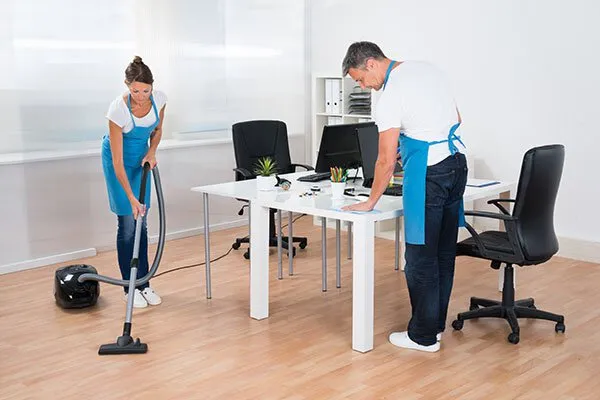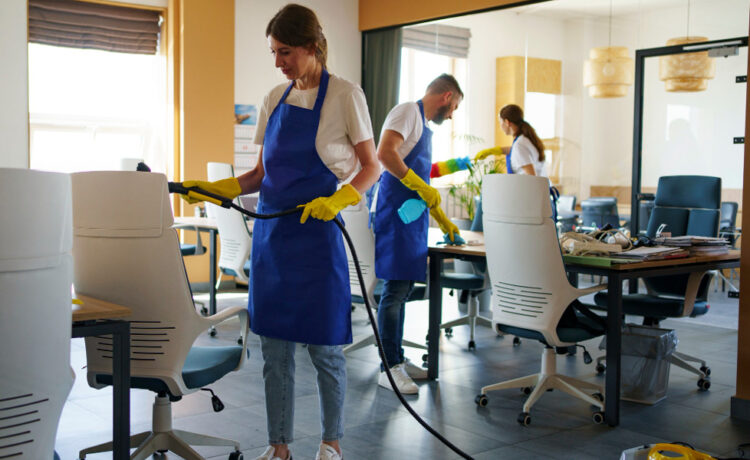The evolution of professional office cleaning represents one of the most overlooked yet influential factors in the development of modern organisational structures and workplace productivity. This seemingly mundane activity—the systematic sanitisation of shared workspaces—reveals profound insights into how environmental conditions shape human cognitive performance and social hierarchies in contemporary work environments.
The Anthropological Significance of Workplace Cleanliness
Throughout human evolutionary history, our species has demonstrated remarkable sensitivity to environmental cues that signal safety, status, and resource abundance. The modern office environment, despite its apparent removal from the natural habitats that shaped our psychology, continues to trigger these ancient response mechanisms.
When we examine the psychological impact of workspace cleanliness through an evolutionary lens, several fascinating patterns emerge:
· Clean environments signal reduced pathogen risk, lowering cognitive vigilance burdens
· Ordered spaces reduce cognitive load by eliminating visual distractions
· Sanitised shared surfaces facilitate pro-social behaviour by removing concerns about contamination
· Well-maintained environments signal organisational competence and resource abundance
The systematic cleaning of office spaces thus functions not merely as a practical health measure but as a sophisticated form of environmental communication that directly influences human behaviour and cognition.
The Biological Impact of Workplace Environments
The biological consequences of office cleanliness extend far beyond the obvious reduction of pathogen transmission. Recent research reveals that environmental cleanliness affects human physiology in subtle yet profound ways:
“The Singaporean approach to office environmental management recognises that air quality, surface cleanliness, and overall workplace hygiene create measurable impacts on employee cognitive function, particularly in tasks requiring sustained attention and complex decision-making.”
The systematic removal of particulate matter, volatile organic compounds, and microbial contaminants through professional cleaning affects:
· Cortisol levels and stress response patterns
· Immune system resource allocation
· Respiratory efficiency and oxygen utilisation
· Sleep quality through reduced allergen exposure
The Sociological Dimension of Office Cleanliness
From a sociological perspective, cleaning practices reflect and reinforce power hierarchies within organisations. The historical evolution of who performs cleaning tasks—from individual workers maintaining their own spaces to specialised professionals with advanced equipment—mirrors broader social transformations in how we conceptualise work and specialisation.

In Singapore’s unique business culture, the approach to office cleanliness reveals fascinating cultural adaptations:
· The integration of Eastern concepts of environmental harmony with Western efficiency models
· The elevation of cleaning from low-status labour to skilled professional service
· The balance between personal responsibility and specialised expertise
· The neutralisation of status signalling through universally high cleanliness standards
The Economic Calculus of Cleanliness Investment
The economic logic behind investing in professional cleaning services reflects a sophisticated understanding of indirect productivity factors. While traditional cost-benefit analyses might struggle to quantify the return on cleanliness investments, forward-thinking organisations recognise several critical economic dimensions:
· Reduced absenteeism through decreased pathogen transmission
· Enhanced cognitive performance in complex problem-solving tasks
· Improved client perception and associated revenue implications
· Reduced staff turnover through improved workplace satisfaction
· Extended lifespan of physical infrastructure and equipment
The Pandemic’s Cognitive Restructuring of Cleanliness Perception
The COVID-19 pandemic triggered a profound psychological reorganisation in how humans perceive shared spaces and surface cleanliness. This shift represents one of the most dramatic collective cognitive adaptations in recent human history.
“Post-pandemic cleaning protocols in Singaporean offices have evolved beyond mere sanitisation toward a comprehensive approach to environmental management that addresses both physical and psychological dimensions of workplace safety.”
This transformation manifests through several observable patterns:
· Heightened awareness of high-touch surfaces and transmission vectors
· Increased visibility of cleaning activities as performative reassurance
· Elevated status of cleaning professionals within organisational hierarchies
· Integration of cleaning considerations into spatial design and material selection
The Technological Evolution of Cleaning Methodologies
The technological dimension of professional office cleaning has undergone remarkable evolution, transitioning from simple manual processes to sophisticated systems incorporating advanced materials science, equipment design, and methodology.
This technological trajectory reveals several interesting patterns:
· The shift from visible interventions (scent, shine) to invisible improvements (air quality, microbiome management)
· The integration of data collection and analysis into cleaning protocols
· The application of ergonomic principles to reduce physical strain on cleaning professionals
· The development of specialised solutions for different workplace environmental challenges
The Future Landscape of Workplace Environmental Management
As we project current trends forward, several fascinating possibilities emerge for the evolution of professional cleaning within organisational contexts:
· Integration of continuous monitoring systems that adapt cleaning protocols to real-time conditions
· Application of microbiome management approaches that cultivate beneficial environmental organisms
· Development of self-cleaning materials and surfaces that reduce maintenance requirements
· Incorporation of biophilic elements that naturally regulate environmental conditions
Conclusion
The seemingly mundane activity of office cleaning, when examined through multiple disciplinary lenses, reveals itself as a sophisticated system that directly influences human cognition, social dynamics, and organisational performance. This understanding transforms our perception of cleanliness from a simple hygiene consideration to a fundamental component of cognitive infrastructure.
As organisations continue to evolve their understanding of how physical environments shape human performance, the strategic importance of environmental management will only increase. For those seeking to optimise both individual and collective cognitive performance—particularly in knowledge-economy contexts where mental clarity directly affects outcomes—there remains significant untapped potential in the thoughtful application of professional office cleaning.







